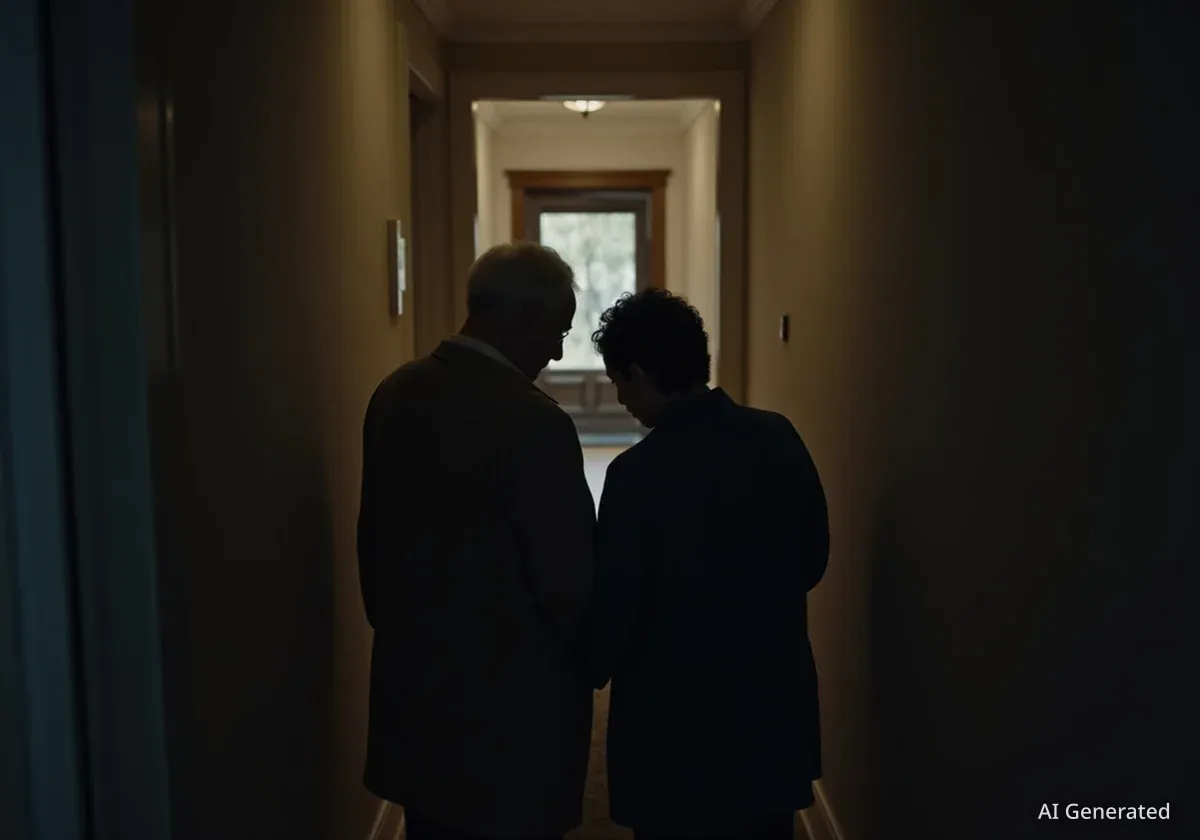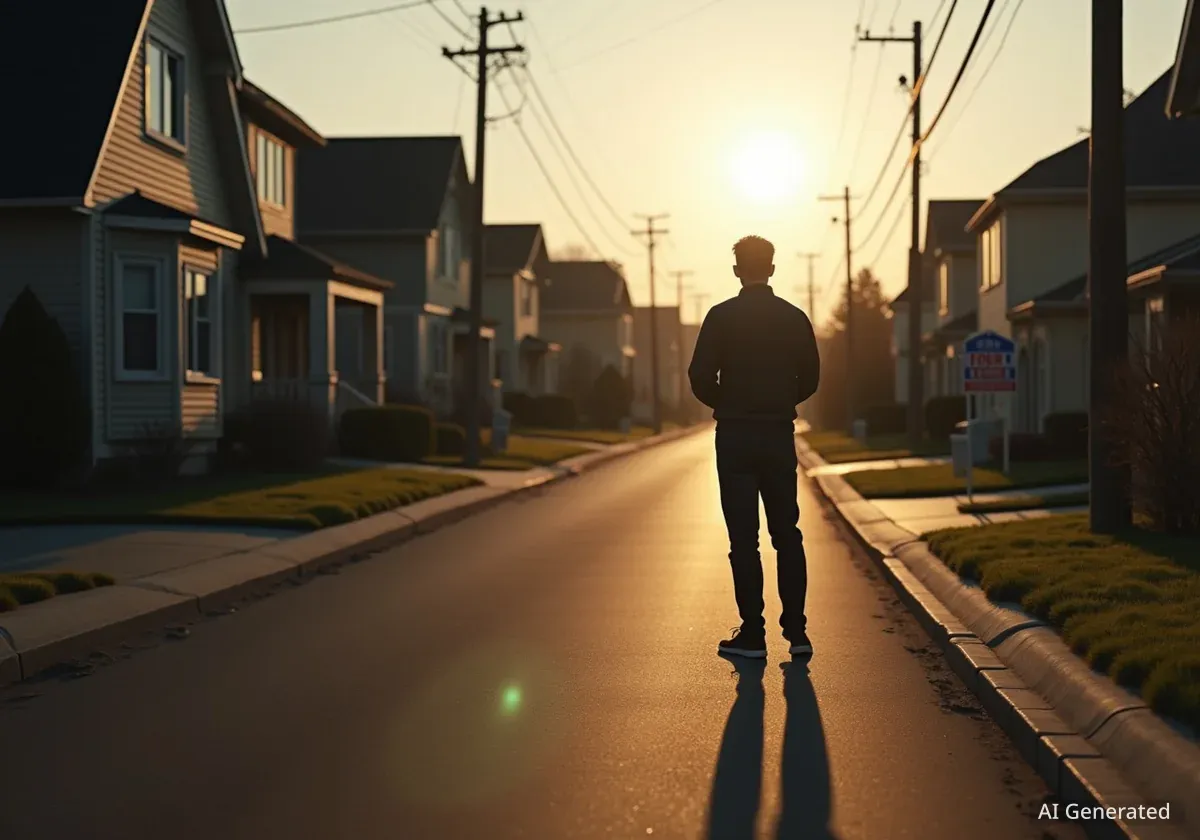Greater Cincinnati is confronting a significant housing shortage for nearly 12,000 adults with intellectual or developmental disabilities (I/DD). A recent market analysis reveals a pressing issue: a large number of these individuals live with aging caregivers who will soon be unable to provide support, leaving a critical gap in available and appropriate housing.
The report highlights that many families are seeking future housing options but face significant obstacles, including high rental costs and complex regulations surrounding support services. In response, private developers and advocates are exploring new models, from microhomes to neuro-inclusive designs, to address the diverse needs of this population.
Key Takeaways
- Nearly 12,000 adults with I/DD in Greater Cincinnati require stable, long-term housing solutions.
- A new study found that 39% of individuals with I/DD live with caregivers who are over the age of 61.
- Major barriers include soaring rent prices and restrictive rules for using Medicaid waiver services in certain housing types.
- Private developers like EmpowerMe Living are creating innovative solutions, such as a microhome project in Oxford, Ohio, with sensory-friendly designs.
- Advocates emphasize the need for a wide variety of housing choices to match the diverse support needs of the I/DD community.
An Overlooked Population at a Critical Juncture
In the Greater Cincinnati region, a quiet but urgent housing problem is unfolding. Nearly 12,000 adults with intellectual or developmental disabilities currently rely on family members for their housing and daily care. While this arrangement provides stability, it is often not a permanent solution.
The core of the issue lies in the demographics of the caregivers themselves. A comprehensive housing market analysis has brought a stark reality to light. According to the data, 39% of adults with I/DD who live with caregivers reside with someone over the age of 61. This statistic points to a looming crisis where a significant portion of caregivers are approaching an age where they can no longer provide the necessary support.
By the Numbers
The challenge in Greater Cincinnati involves finding suitable homes for a population of nearly 12,000 people. The aging caregiver statistic underscores the urgency, as thousands may need to find new living situations in the coming years.
This situation places immense pressure on families to plan for a future that feels uncertain. They must navigate a housing market that is often ill-equipped to handle the specific needs of their loved ones, from physical accessibility to the availability of on-site support services.
Financial and Regulatory Hurdles Complicate the Search
For families seeking to secure future housing, the path is filled with significant obstacles. The rising cost of rent across the region is a primary barrier, making many independent living options financially unattainable for individuals who may have limited incomes.
Beyond affordability, families must contend with a complex web of regulations. A major challenge involves the rules surrounding Medicaid waiver services. These waivers are crucial for providing funding for in-home support, personal care, and other essential services. However, restrictions can limit how and where these funds can be used, often excluding innovative or non-traditional housing arrangements.
Understanding Medicaid Waivers
Medicaid Home and Community-Based Services (HCBS) waivers allow states to provide long-term care services in home and community settings rather than in institutional facilities. While vital, the regulations can be difficult to apply to new housing models, creating a roadblock for developers and families trying to build creative living solutions.
These financial and bureaucratic challenges mean that even when families plan ahead, their choices are severely limited. The lack of flexible, affordable, and supportive housing leaves many feeling trapped, with few viable alternatives to the current family home.
A Developer's Innovative Approach to Inclusive Housing
Amid these challenges, a private real estate developer in Anderson Township is pioneering new solutions. EmpowerMe Living is focused on creating housing specifically designed for adults with I/DD, moving beyond traditional group home models to offer greater independence and choice.
The company's work came to public attention following a public records request related to modular housing initiatives in Cincinnati. While its projects differ from typical modular construction, they share the same core principles: creating housing that is affordable, can be built quickly, and can be replicated in other communities.
"The goal is to build creative housing solutions for this population. It's not just about putting a roof over someone's head; it's about creating a supportive environment where they can thrive," an advocate familiar with the project noted.
EmpowerMe Living's philosophy centers on the idea that housing should be as diverse as the people it serves. This means considering everything from architectural design to the integration of support services within the community.
The Oxford Microhome Project
A prime example of this innovative approach is a new microhome project planned for Oxford, Ohio. This development is designed to provide a unique living experience tailored to the residents' needs. The homes will be small, manageable, and built with features that support independent living.
Key features of the Oxford project include:
- Neuro-inclusive interiors: Designs that reduce sensory overload, using calming color palettes, sound-dampening materials, and predictable layouts.
- Sensory-friendly elements: Careful consideration of lighting, textures, and ambient sounds to create a comfortable and non-stressful environment.
- Community Integration: The project is designed to be part of the wider community, with easy access to public transit and local amenities.
This project represents a shift in thinking, where the home itself is a tool for supporting the well-being and independence of its residents. It moves away from a one-size-fits-all approach and toward personalized living spaces.
The Ultimate Goal A Diversity of Choice
While projects like the one in Oxford are promising, experts and advocates stress that they are just one piece of a much larger puzzle. The most critical need for the I/DD community is a wide spectrum of housing options. The needs of adults with developmental disabilities are not uniform; they vary significantly from person to person.
Some individuals may require 24/7 care and substantial support, making a group home or a highly supportive community the best fit. Others are capable of living almost entirely independently and may only need occasional check-ins or assistance with specific tasks like budgeting or transportation.
A successful housing strategy for Greater Cincinnati must reflect this diversity. It should include a range of choices, such as:
- Apartment complexes with on-site support staff.
- Small group homes integrated into residential neighborhoods.
- Microhome communities that foster independence and social connection.
- Programs that support individuals living in their own homes or apartments.
Ultimately, the conversation is about more than just housing; it is about dignity, choice, and the right of every individual to select a home that best suits their needs and aspirations. Like anyone else, adults with I/DD deserve to have a say in where and how they live.





